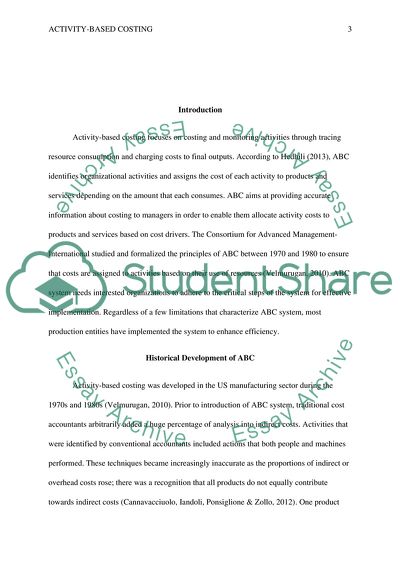Cite this document
(Activity Based Costing (ABC) Research Paper Example | Topics and Well Written Essays - 1750 words, n.d.)
Activity Based Costing (ABC) Research Paper Example | Topics and Well Written Essays - 1750 words. https://studentshare.org/finance-accounting/1817685-activity-based-costing-abc
Activity Based Costing (ABC) Research Paper Example | Topics and Well Written Essays - 1750 words. https://studentshare.org/finance-accounting/1817685-activity-based-costing-abc
(Activity Based Costing (ABC) Research Paper Example | Topics and Well Written Essays - 1750 Words)
Activity Based Costing (ABC) Research Paper Example | Topics and Well Written Essays - 1750 Words. https://studentshare.org/finance-accounting/1817685-activity-based-costing-abc.
Activity Based Costing (ABC) Research Paper Example | Topics and Well Written Essays - 1750 Words. https://studentshare.org/finance-accounting/1817685-activity-based-costing-abc.
“Activity Based Costing (ABC) Research Paper Example | Topics and Well Written Essays - 1750 Words”. https://studentshare.org/finance-accounting/1817685-activity-based-costing-abc.


